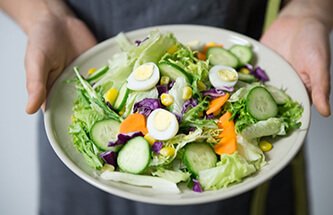Lifestyle Habits that Reduce the Chances of Breast Cancer

Breast cancer is a disease in which cancer cells grow uncontrollably in the breast. There are different kinds of breast cancer. Most begin in the lobules or ducts of the breast, but the cancerous cells can spread to other body parts via lymph vessels and blood vessels. Symptoms can include a breast lump, breast or nipple pain, breast swelling, and nipple retraction or discharge. The disease has various treatments, including chemotherapy, radiation, and surgeries such as a mastectomy.
Some cancer risks are unavoidable. For example, there’s little anyone can do about their family history or genetic mutations. But maintaining a healthy weight is one lifestyle change that can decrease cancer risk. Following a healthy diet, exercising regularly, and maintaining a healthy weight can possibly prevent cancer. Abstaining from smoking and getting routine breast exams can help as well. There are several factors that increase the possibility of developing breast cancer. The following are believed to be some of the most contributing factors for breast cancer development:
1. Genetic mutations
There are two genes associated with inherited breast cancer: BRCA1 (BReast CAncer gene one) and BRCA2 (BReast CAncer gene two). Females and males have these genes, but females are more likely to develop breast cancer. BRCA genes are supposed to repair cell damage and keep them growing normally. The problem arises when the BRCA genes are affected by inherited mutations. The mutations prevent the genes from functioning normally, and the risk for cancer increases.
2. Age
The risk of developing cancer increases as the body gets older. For example, one out of 8 cases of invasive breast cancer occurs in women aged 45 or younger. But 2 out of 3 cases of invasive breast cancer occur in women older than 55. Considering this, getting older is the greatest risk factor for developing the disease. The longer a person lives, the more opportunities arise for genetic mutations. And as the body gets older it becomes less efficient at self-repair.
3. Family history of breast cancer
If a woman’s sister, mother, or daughter is diagnosed with breast cancer, then that woman is more likely to get the disease. When a woman’s father or brother has been diagnosed with breast cancer, that also increases a woman’s risk of getting the disease. The link between family history and the disease is linked to genetic mutations. In addition to BReast CAncer genes one and two, an abnormal checkpoint kinase 2 (CHEK2) gene may play a role. The CHEK2 gene is a tumor suppressor that regulates cell division.
4. Body weight
Women with a body mass index (BMI) over 25 are considered obese or overweight. And women in this group have a higher risk of developing breast cancer when compared to women with a smaller BMI. A BMI over 25 also increases the chance of cancer recurring in women who’ve already faced the disease. Fat cells make estrogen, and more fat cells mean the body has an abundance of estrogen. This is a concern because estrogen can cause hormone-receptor-positive breast cancers to develop and grow.



